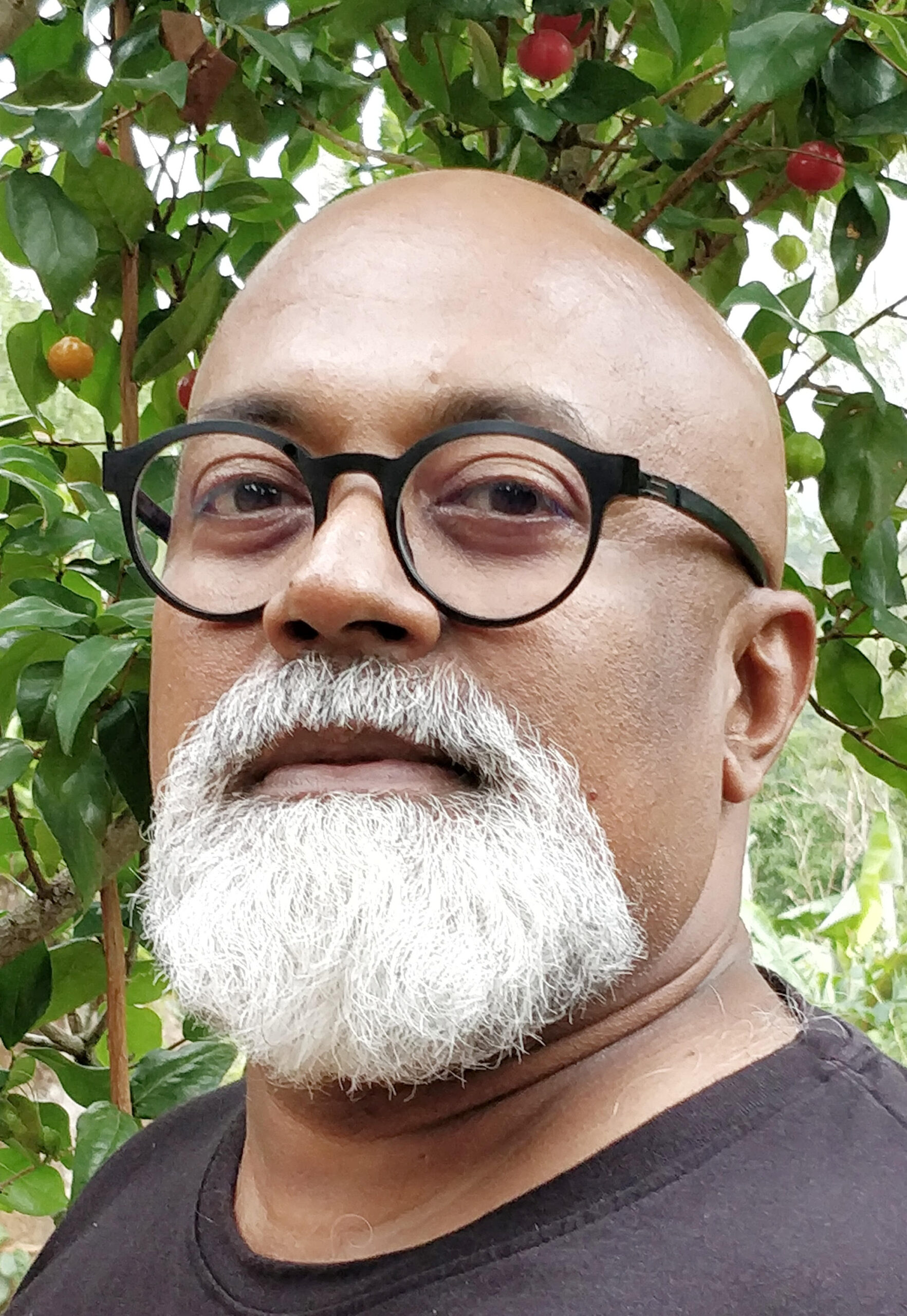
Vivek Vilasini’s wide-ranging practice spans photography, installation, sculpture, and ecological interventions. Deeply invested in questions of identity, translation, and belonging, his work explores how cultural meaning migrates across geographies and media. Drawing from political history, environmental systems, and personal memory, Vilasini constructs intricate visual vocabularies that resist easy classification.
At the heart of Vilasini’s practice lies a sustained inquiry into the evolution of identity—seen not as fixed, but as constantly negotiated through everyday social practices, collective memory, and shifting contexts. Through photography, he challenges the idea of the image as a neutral document. Instead, his photographs operate as visual hypertexts—composite fields of meaning where absence, translation, and subjectivity intersect. Local histories, social rituals, and cultural dislocations surface in layered narratives that combine formal precision with conceptual depth.
Vilasini first gained prominence in the late 1990s while based in the UAE, where he was part of a seminal cohort of contemporary artists that included Hassan Sharif, Mohammed Kazem, Abdullah Al Saadi, and Ibrahim. During this period of intense artistic experimentation, he exhibited sculptural and conceptual works at the Sharjah Museum, Alliance Française, and multiple editions of the Sharjah Biennale. These early explorations laid the foundation for his enduring interest in cross-cultural dialogue and alternative modernities.
He is perhaps best known for works that examine identity as an osmotic process—shaped simultaneously by rootedness and rupture. His 2008 photographic series Between One Shore and Several Others uses mimicry, reflection, and fragmentation to comment on ideological constructs and shifting political landscapes. Translation, in Vilasini’s work, becomes both method and metaphor—whether through opposition, assimilation, or naturalization.
In 2008, Vilasini began work on a long-term ecological project in Munnar, Kerala—transforming six acres of land into a regenerative food forest. This living artwork, now evolving under the name The Udumbanchola Initiative, blurs the boundaries between art, ecology, and social sculpture.
Conceived as both an edible landscape and a site for community learning, it reflects his commitment to sustainability, resilience, and collective futures.Vilasini’s artistic language embraces ambiguity and multiplicity. Across photography, sculptural installation, and performative text, he maintains a conceptual rigor that reflects on the politics of perception and representation. His work often implicates the viewer in layered systems of meaning—troubling the binaries between center and margin, real and imagined, subject and structure.
He has exhibited widely in India and internationally, with solo and group shows across Europe, the Middle East, and South Asia. His work has been featured at Smithsonian Museum, CCCB Barcelona, Singapore Museum, Royal Ontario Museum, Indian Museum etc, and also at the Sharjah Biennale, Montevideo Biennale, Praque Biennale, Kochi-Muziris Biennale and in key institutional collections like Kadist and more.
In parallel with his studio practice, Vilasini has contributed significantly as a mentor, researcher, and guest speaker. He continues to build bridges between critical thought, environmental care, and artistic form—advocating for art as a vital site of inquiry, resistance, and renewal.
Vivek Vilasini was born in 1964 in Thrissur, Kerala. He trained as a Marine Radio Officer and also studied Political Science from Kerala University as well as sculptural practices with traditional craftsmen. He lives and works between Kochi, Munnar and Abudhabi.
Books & Publications
Image Studies: Theory and Practice, By Sunil Manghani
But We Cannot See Them: Tracing a UAE Art Community, 1988–2008
A survey of the UAE's avant-garde artistic movement of the 1980s
ARTS: The Arts in Religious and Theological Studies (vol. 24, no. 1), 2013
Journal – January 1, 2013
Le Christ au miroir de la photographie contemporaine
Alphil, 2016
Atopia: Art i ciutat al segle XXI / Arte y ciudad en el siglo XXI
Published by: CCCB
In the News & Media
Body Transformed: Contemporary South Asian Photographs and Prints | Smithsonian Institution
Well-known photographer shows how sudden lockdown in the US changed his art
'Portrait of a Nation II' reveals the development of the UAE art scene
What’s Trending at Art Basel Hong Kong
Vivek Vilasini | City - Fifth Investigation (Day 1), 2017 | Art Basel
Delhi’s pollution on show at Art Basel Hong Kong 2018
India stamps its presence on Art Basel Hong Kong
Art Basel Hong Kong 2018: Artist Vivek Vilasini seeks to capture climate change atmospherics
Artist Vivek Vilasini farms the land
The 10 Best Booths at Art Basel in Hong Kong | Artsy
Establishing an Arts Scene: The Beginnings of Something Beautiful
Ishara Body Building Exhibition Press Release August
'Última Cena-Gaza', de Vivek Vilasini
Atopia art and the city in 2010-02
Art From India To Iowa In Clarinda
The Many Faces of Gandhi - The New York Times
Art toronto presents a world of art under one roof
Atopia at CCCB Centre de Cultura Contemporània de Barcelona Barcelona
NYU Abu Dhabi Art Gallery explores Avant-Garde UAE artist community from 1980s
The journey of a vital artistic community
The ideas that shape our identity
«Le Christ est devenu un personnage de fiction»
Identities and influences - The Hindu
Bengaluru’s Museum of Art & Photography goes virtual - The Hindu
In the printmaking zone at Hyderabad’s Banyan Hearts Studios - The Hindu
Growing apples in the tropics - The Hindu
Inspired by the Holy Week - The Hindu
Well-known photographer shows how sudden lockdown in the US changed his art
IAF diaries: 2022 Vilasini’s vivacious photograph
Recreating Identity | Mumbai News - The Indian Express
LASER TALKS AT DARTINGTON - ART AFTER THE COLLAPSE
HASSAN SHARIF: INTEREXCHANGE SYMPOSIUM